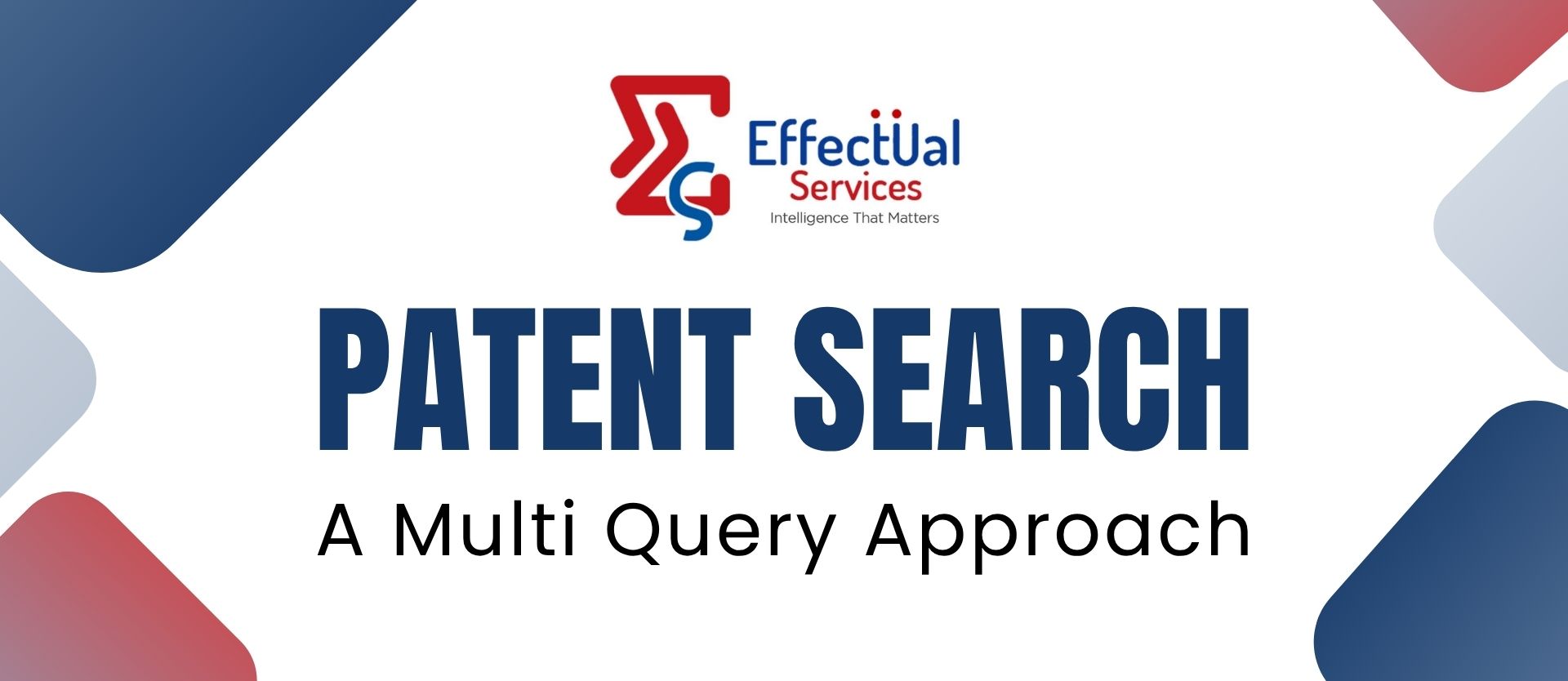Patent Search - A Multi Query Approach

A comprehensive patent search is crucial to assess an invention’s novelty and avoid infringement. The success of this process hinges on well-crafted, multi-approach search queries that combine various strategies to deliver thorough and accurate results, often determining the outcome of a patent application.
Understanding Patent Searches
- Purpose of Patent Search: Identifies prior art to assess novelty and non-obviousness of an invention.
- Benefits: Helps avoid infringement, defines patent scope, and reveals competitor activity.
- Challenges: Vast databases and complex technical language make relevant results hard to find.
- Solution – Multi-Approach Search: Combines different search strategies and parameters to improve accuracy and uncover relevant patents effectively.
The Importance of Multi-Approach Search Queries
Maximizing Coverage and Accuracy: Patent databases like those of the USPTO, EPO, and WIPO hold millions of records, making it easy to miss key patents if relying on a single keyword or classification. Due to variations in terminology, classifications, and language, a multi-approach search that combines various strategies ensures broader, more accurate, and complete results.
Incorporating Various Search Parameters: A multi-approach search query often involves multiple parameters, such as:
- Keywords: Descriptive terms related to the invention.
- Patent Classifications: International Patent Classification (IPC) or Cooperative Patent Classification (CPC) codes help narrow down the search to specific technology areas.
- Inventors and Assignees: Searching by known inventors or companies can help identify relevant patents in specific fields.
- Citations: Patents cited by or cited in other patents can provide insight into the technology's development and identify potentially relevant prior art.
- Assignee and Applicant Information: Searching for patents filed by particular companies or individual inventors within a given technological field.
Refining Search Results Patent databases provide robust filters—such as filing date, legal status, country, and document type—that help refine results. These tools streamline the search process by focusing on the most relevant and up-to-date patents.
Handling Variations in Terminology and Synonyms Terminology in patents often varies due to synonyms, technical jargon, or regional differences. Multi-approach searches tackle this by using diverse terms and synonyms, ensuring relevant patents aren’t overlooked due to language inconsistencies.
Incorporating Boolean Operators and Advanced Search Techniques Effective patent search queries use Boolean operators like AND, OR, and NOT, along with proximity operators and wildcards, to refine results. These tools help combine related terms or exclude irrelevant ones—for instance, “AND” shows results with both terms, while “OR” captures either.
Multi-Approach Search Strategies for Comprehensive Patent Searching
-
Keyword-Based Search
Keyword-based search is a widely used patent search method that relies on descriptive terms related to the invention. While quick and easy, it often needs refinement, as varied terminology in patents can lead to missed or irrelevant results. Choosing the right keywords is key.
Best Practices:
- Include synonyms and variations of terms.
- Consider using wildcard characters to account for word variations (e.g., "automobile*" to cover "automobile," "automobiles," "automotive").
- Incorporate Boolean operators to refine the search further (e.g., "solar AND panel").
-
Classification-Based Search (IPC and CPC)
Patent classifications like IPC and CPC group patents by technical field, enabling more targeted searches. Since each patent is tagged with relevant codes, using these classifications helps find patents within specific areas of innovation more effectively.
Best Practices:
- Identify relevant IPC or CPC codes related to your technology area.
- Start with broad classifications and narrow down if necessary
- Use combined searches of classification codes and keywords for precise results
-
Problem-Based Search
Problem-based searches target patents that address a specific challenge, focusing on the issue rather than technical details. This approach helps identify relevant prior art that may use different terms or technologies but solves similar problems.
Best Practices:
- Clearly define the problem your invention addresses.
- Use keywords or phrases that describe the underlying problem
- Search for patents filed using similar problem-solving approaches
-
Solution-Based Search
Solution-based searching focuses on finding patents that offer methods or solutions to the problem your invention addresses. It helps assess existing technologies, evaluate novelty, and identify areas for improvement in your invention.
Best Practices:
- Focus on specific technologies or methods used to solve the problem.
- Use technical terms and phrases that describe the solution itself (e.g., "filtration system" for water purification).
- Look for patents that describe similar technical solutions or implementations.
-
Inventive Concept-Based Search
An inventive concept-based search targets the core idea or principle behind an invention, focusing on novel approaches or configurations rather than specific components. It's ideal for identifying prior art in breakthrough or highly innovative technologies.
Best Practices:
- Identify the core inventive concept or principle of your invention
- Use abstract or conceptual terms to describe the innovation.
- Look for patents that embody similar inventive steps or core concepts, even if their implementation differs.
-
Patent Searches for Foreign Jurisdictions
For international patent searches, particularly in jurisdictions like Japan, specific classification systems are used to categorize patents. Japanese patents utilize F-Terms—an additional classification system that supplements the IPC/CPC codes. Searching through these specific classifications allows for a more accurate identification of prior art in the Japanese patent database and other foreign patent systems.
Best Practices:
- Understand and utilize the specific classification systems of different jurisdictions, such as F-Terms in Japan.
- Access regional patent databases and specialized resources for foreign patents (e.g., J-PlatPat for Japan).
- Perform a combined search using both F-Terms and IPC/CPC codes to maximize search results.
Way Forward
A multi-approach search strategy is essential for a thorough and accurate patent search. By combining keywords, classifications, Boolean logic, and concept-based methods, searchers can uncover relevant prior art more effectively. This not only strengthens patent applications but also helps avoid infringement and supports better innovation decisions.
About Effectual Services
Effectual Services is an award-winning Intellectual Property (IP) management advisory & consulting firm offering IP intelligence to Fortune 500 companies, law firms, research institutes and universities, and venture capital firms/PE firms, globally.
Through research & intelligence we help our clients in taking critical business decisions backed with credible data sources, which in turn helps them achieve their organisational goals, foster innovation and achieve milestones within timelines while optimising costs.
Solutions Driving Innovation & Intelligence
Enabling Fortune 500's, R&D Giants, Law firms, Universities, Research institutes & SME's Around The Globe Gather Intelligence That
Protects and Nurtures Innovation Through a Team of 250+ Techno Legal Professionals.

